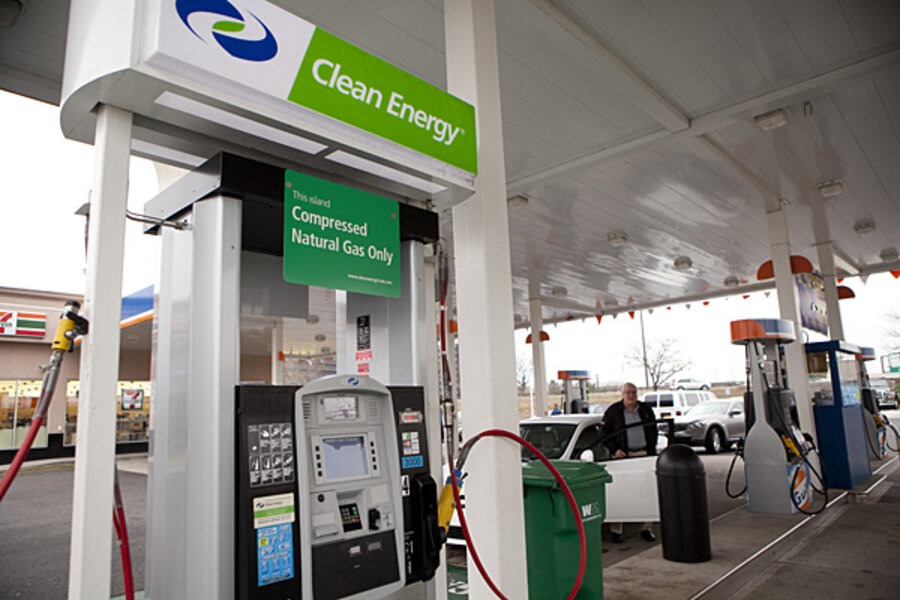Why aren't more Americans driving natural gas cars?
Loading...
Given the massive volumes of natural gas coming out of America’s shale fields, why haven’t natural gas-fueled vehicles caught on yet? After all, the U.S. is the largest natural gas producer in the world, and if it could figure out a way to use that abundant fuel in automobiles it could reduce oil dependency, give drivers more choices and reduce air pollution.
It’s a chicken-and-egg problem. There are very few personal vehicles that run on compressed natural gas (CNG), and hardly any refueling stations at which to gas up. Auto companies don’t want to build CNG vehicles if people don’t have a place to refuel, and no company is going to build a CNG refueling station without any customers.
CNG has been much more widely adopted by municipal buses systems and long-haul trucking companies, because city governments and businesses like UPS and FedEx have predictable driving patterns, so they can plan routes around CNG refueling stations.
Now Texas is hoping to incentivize more people to make the switch. The Texas Commission on Environmental Quality announced this week that purchases of qualified alternative-fuel vehicles – CNG, liquefied petroleum gas (LPG) and electric vehicles (EV) – will be eligible for a $2,500 rebate.
The decision is an outgrowth of legislation passed last year by the state legislature. While incentives have previously been awarded for heavy-duty vehicles that run on alternative fuels, TCEQ’s move is specifically targeted at light-duty vehicles. TCEQ will provide up to $7.7 million in incentives. The state also unveiled a CNG refueling station in San Antonio, and officials were on hand for the grand opening on May 14.
However, this is a drop in the bucket and won’t do much to change the calculus for millions of drivers in Texas, or around the country for that matter. Converting a regular gasoline vehicle to run on CNG can cost several thousand dollars at a minimum. Moreover, natural gas prices are historically more volatile than oil prices, leaving consumers unsure of what they are getting into. Most importantly though, is the lack of refueling stations, which give drivers a form of “range anxiety” often associated with electric vehicles.
There are around 142,000 natural gas vehicles (NGVs) on America’s roads today but only 1,325 refueling stations, according to NGV America. Other countries have made much bigger progress. Iran, the world leader in NGVs, has over 3 million cars on the road that run on natural gas. Rounding out the top five are Pakistan (2.9 million NGVs), Argentina (2.1 million), Brazil (1.7 million), and China (1.5 million). What all these countries share in common is substantial incentives at the federal level.
A few years ago, there was some momentum to do just that in the U.S. Congress. T. Boone Pickens, the billionaire oil and gas magnate, was pushing his “Pickens Plan” in 2011. The plan, which would have provided $64,000 tax credit for the purchase of natural gas-fueled long-haul trucks, and lesser amounts for light-duty vehicles, had strong bipartisan support in the House of Representatives. But the Pickens Plan ultimately died in the Senate.
Without federal support, CNG vehicles remain a niche market in the U.S. and will likely remain so, despite the prodigious levels of natural gas production.
Meanwhile, there is a heavy push by the government at both the state and federal level to roll out electric vehicles. Electric vehicles have the same infrastructure obstacles as CNG, but it is highly unlikely that the automobile market would be able to support huge refueling infrastructure for both. The more that the EV market grows, the harder it will be for CNG vehicles to make inroads.







